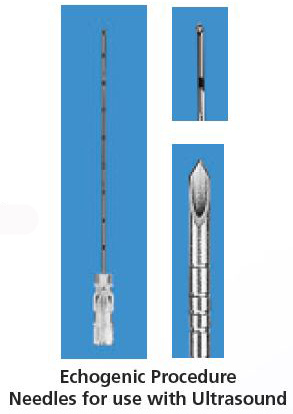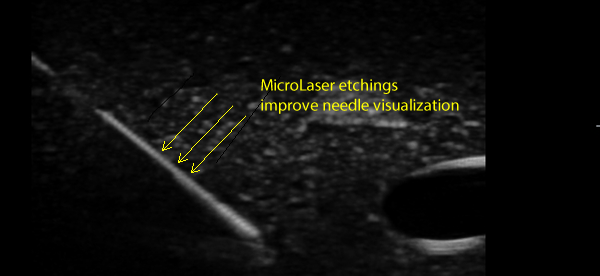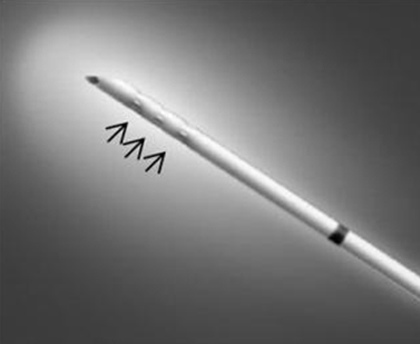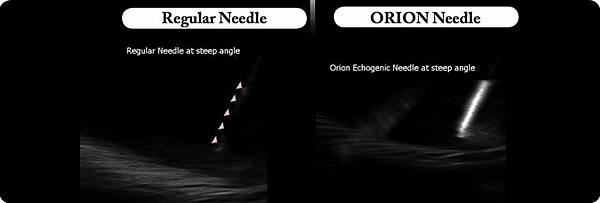









Needle echogenicity in sonographically guided regional anesthesia:blinded comparison of 4 enhanced needles and validation of visual criteria for evaluation.
Sviggum HP1, Ahn K, Dilger JA, Smith HM.
J Ultrasound Med. 2013 Jan;32(1):143-8.
Abstract
OBJECTIVES:
Needle visualization is important for sonographically guided regional anesthesia procedures. Needle characteristics that improve needle visualization are therefore important to anesthesiologists. This study compared several echogenic needle designs by defining characteristics of needle echogenicity and assessing regional anesthesiologist preferences for these characteristics across various needle angles.
METHODS:
Twelve blinded regional anesthesiologists graded 5 randomized block needles (1 nonechogenic control and 4 echogenic) on 4 predefined characteristics (overall brightness of the needle, overall clarity of the needle, brightness of the needle tip, and clarity of the needle tip). In-plane needle images in a gel phantom were obtained at 4 needle angles (15°, 30°, 45°, and 60°). Participants rated specific needle characteristics for each needle at each angle and then ranked their overall needle preferences.
RESULTS:
Significant differences in all 4 needle characteristics were found across needle types (P< .01). Clarity of the needle tip was significantly associated with overall needle rank (P = .009). Other needle visualization characteristics were not significantly correlated with needle rank. The SonoPlex Stim needle (Pajunk Medical Systems, Tucker, GA) was rated highest in all 4 predefined needle characteristics as well as overall needle rank.
CONCLUSIONS:
This study shows that anesthesiologists prefer certain visual characteristics of needles used in sonographically guided regional anesthesia procedures. Specifically, needle tip clarity most closely predicted clinician needle preferences. These results support the idea that all echogenic needle designs do not uniformly enhance needle visualization. Further studies are needed to determine whether needles with superior tip clarity predict not only clinician preferences but also improved sonographically guided regional anesthetic outcomes.



 留言列表
留言列表
